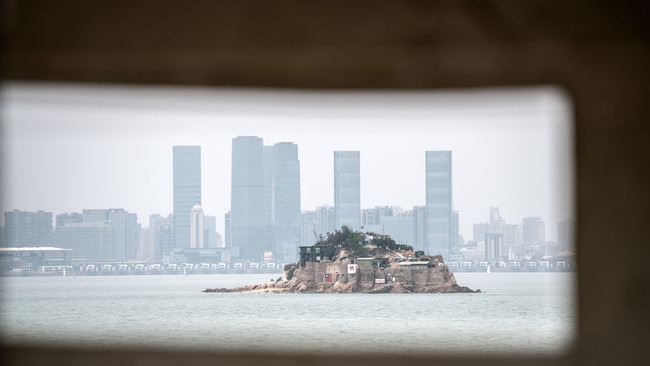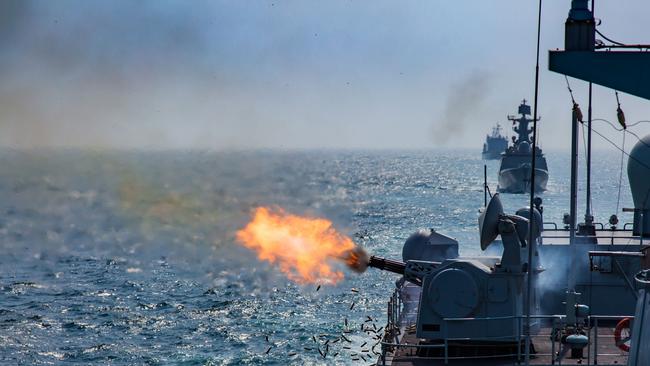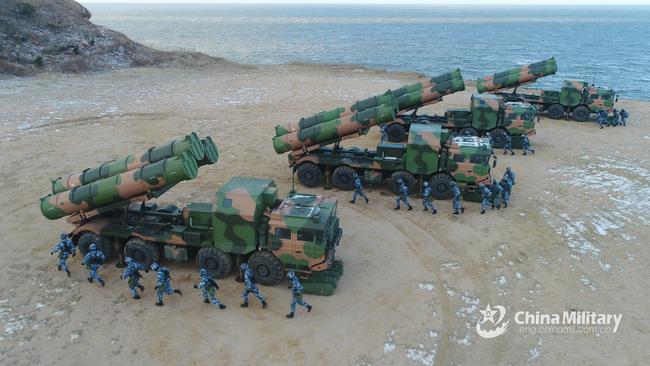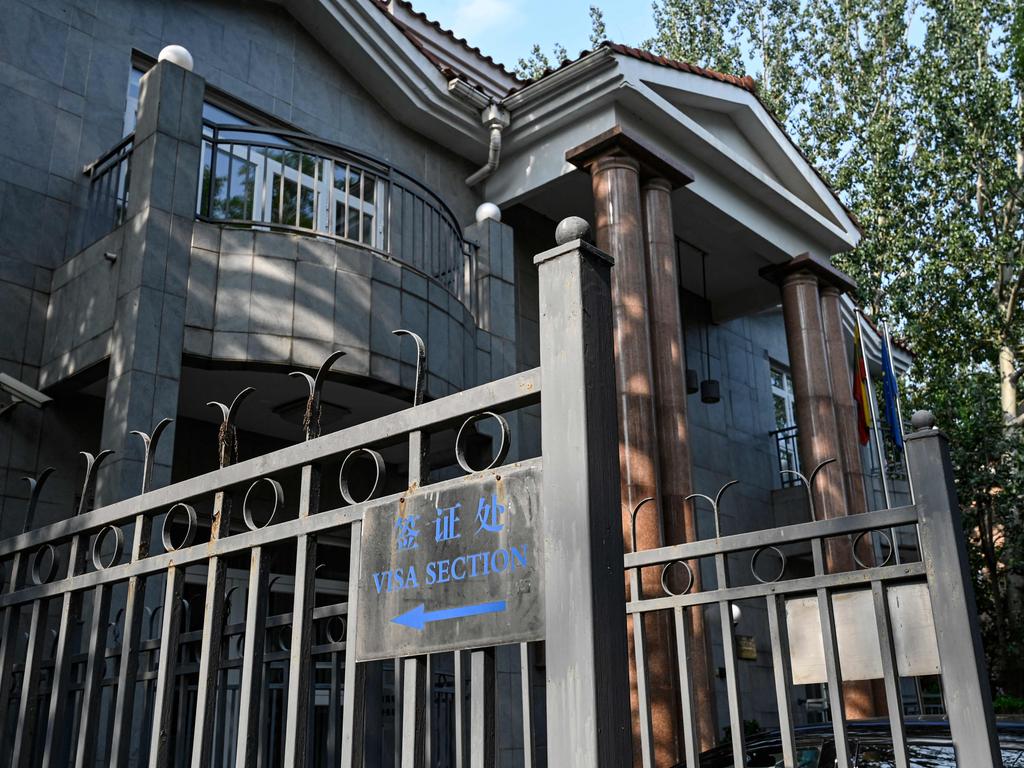New runway in Strait puts Beijing’s jets ever closer to Taiwan
Beijing’s plan for a new airport in the contested Taiwan Strait comes after its military began live-fire war games in the area.

China is to build an airport on reclaimed land in the contested Taiwan Strait, amid rising tensions and near-constant drills by its military forces.
The $650m project would be between the isles of Dasha and Xiaosha near Pingtan island — at the closest possible point from the mainland to Taiwan and its capital, Taipei.
The plan was disclosed a day after the Chinese military on Tuesday began its latest round of live-fire war games involving ships, anti-submarine aircraft and fighter jets near Taiwan. The manoeuvres were described as a response to “provocations” by the US over the independently governed island that Beijing regards as its sovereign territory to be reclaimed by force if necessary.
Analysts said that the drills by China’s eastern command were to show that it could prevent American troops from coming to Taiwan’s aid if Beijing decided to invade.
The state-run Global Times reported that the airport would be a “major aviation and logistics hub with access to Taiwan”. It said it would be focused on tourism and would build links between Taiwan and Fujian, the southeastern province. The project comes after a build-up of military infrastructure on the mainland.

China has previously used reclamation techniques to build a series of fortified islets in the disputed waters of the South China Sea. Satellite images this year showed that China had already expanded runways at two military air bases in Longtian and Huian, about 270km from Taipei. A military aircraft would take seven minutes to reach the capital city from either base, or even less from the new airport.
Two Chinese aircraft were this week reported to have entered areas designated by Taiwan for its military use. Senior Colonel Shi Yi, a spokesman for the Chinese forces, said the missions were a “solemn response” to “external interference and provocations by Taiwan independence forces”.
Washington, which has a security pact with Taipei, has further angered Beijing by deepening its ties with the island. The Biden administration this month approved its first arms sale to Taiwan, with 40 advanced howitzer artillery systems in a $US750m ($1.04bn) deal.
Last week, a joint coast guard working group between Taiwan and the US agreed to meet regularly to co-ordinate responses to “maritime challenges”, a move seen by Beijing as paving the way for military co-operation.

Beijing has vowed to achieve “national unity” by 2050 and take over Taiwan, which broke away from the mainland in 1949 after the civil war. The US and China are also locked in a dispute over the South China Sea, which Beijing has militarised with a series of bases and considers to be almost exclusively its own territory, despite claims from other countries.
In its pivot to Asia, the Royal Navy has sent its flagship, the aircraft carrier HMS Queen Elizabeth, on “freedom of navigation” patrols in the region, provoking warnings that it would face retaliation if it encroached on Chinese territorial waters.
Beijing has announced several large infrastructure deals to link the mainland to the island, all of which have been rejected by Taipei.
Taiwan has been included in China’s latest national transportation network plan, which proposes a high-speed railway between Fuzhou, the provincial capital of Fujian, and Taipei, possibly by 2035. The Chinese also want to build a motorway connecting Beijing to Taipei.
As part of the proposal, China intends to build a tunnel from Pingtan to the coast of Taiwan, though its feasibility has been questioned. A bridge to Pingtan, which has a population of about 420,000, was completed in 2019. An experimental zone was set up on the island county in 2009 to explore models of cross-strait co-operation.

“The island of Pingtan is the closest to Taiwan, with only 68 nautical miles to Taiwan’s Hsinchu,” the state-owned Assets Supervision and Administration Commission said.
“As the nexus of the planned Beijing-Taipei Highway, it’s an important passage to Taiwan in the long-term plan and it will play a positive role in connecting the infrastructure across the strait.”
The 16km bridge, designated as part of the Beijing-Taipei Highway, was opened to traffic last year, and has a six-lane motorway on the upper level and tracks for high-speed trains on its lower deck.
Beijing is also considering building a sea tunnel between Pingtai, in the western Guangdong province, and Hsinchu, in northern Taiwan, to accommodate a high-speed railway line and a motorway. No immediate plans for construction have been disclosed.
Taiwan has made no official statement on its inclusion in China’s infrastructure plans.
Taiwan News, an online site, said the island’s government had “previously rejected attempts to aggressively entwine it into the infrastructure of a hostile foreign power”.
The Times







To join the conversation, please log in. Don't have an account? Register
Join the conversation, you are commenting as Logout